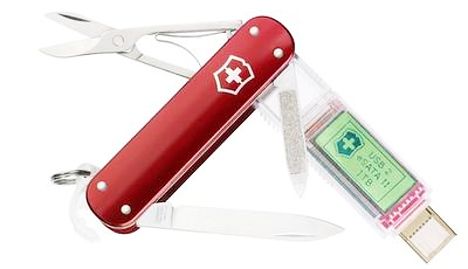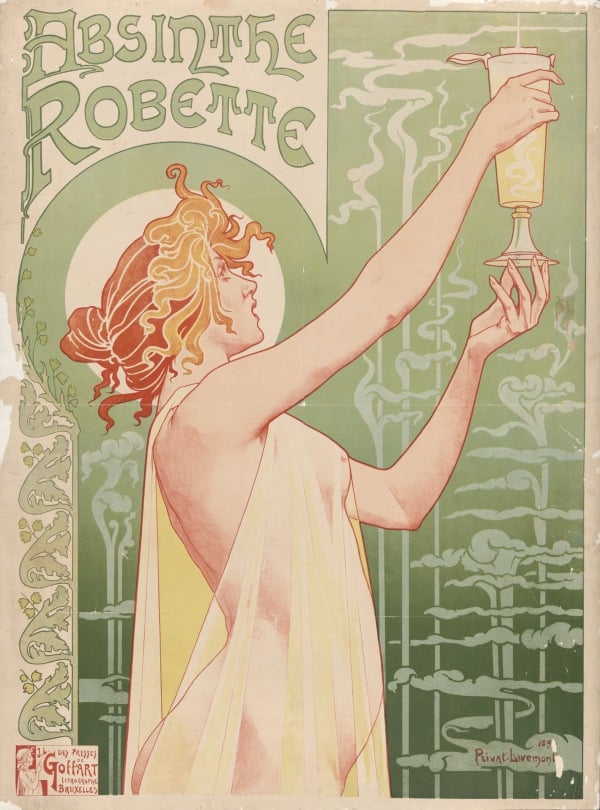Ten great Swiss inventions you need to know about

From seriously mind-bending substances to world-changing democracy, the Swiss have made some major contributions to life as we known it.
First things first: contrary to popular belief, the Swiss most likely did not invent cuckoo clocks (that honour probably goes to the Germans) or the world wide web – despite some serious contributions to its development taking place in Geneva.
But there are a number of key inventions the Swiss can lay claim too. Here are some of the most notable.
Velcro
Swiss engineer George de Mestral was out hunting one day and came home to find seed pods sticking steadfastly to his shoes, clothes, and dog. After a peek through the microscope to see what was going on, he created Velcro, a portmanteau of the words velvet and crochet, mimicking the hook shapes of the seeds' coatings that would cling repeatedly to any surface with an available loop.
The fastener has famously been used by NASA and is a fashion industry staple (pardon the pun).
.jpg)
As used by NASA - velcro: Depositphotos
The Red Cross
A Swiss quintet including the philanthropist Henry Dunant, lawyer Gustave Moynier, physicians Louis Appia and Theodore Maunoir, and general Guillaume-Henri Dufour lie behind what is arguably the world’s most famous humanitarian organization: the Red Cross.
Shocked by the fate of the wounded at the 1859 Battle of Solferino between French and Austrian troops in northern Italy, Dunant launched a campaign to set up international rules on caring for wounded soldiers, notably prisoners. This gave birth to the Geneva-based International Committee of the Red Cross.
Swiss Army Knife
Invented by Karl Elsener and named after his mother Victoria, the Victorinox (Victoria plus inox, a shortened form of the French word for stainless steel, inoxydable) Swiss Officers' Knife has evolved from its creation in the 1890s as a simple knife to include a panoply of features from the basic corkscrew to very contemporary additions like LED lights and USB drives.

Photo: Victorinox
Direct democracy
Though the Ancient Greeks are credited with the concept of democracy, it was the founding of the Swiss Confederation in 1291, that saw the principles of direct democracy put into action at a time when monarchies ruled elsewhere across Europe. Today, the popular initiatives and referendums they engender are a proud part of Swiss heritage and an object of eternal fascination and occasional envy abroad.
Read also: How's Switzerland's direct democracy system works
Aluminium foil
The first patent for aluminium foil was taken out by Swiss business man Heinrich Alfred Gautschi in 1905 but it wasn’t until 1910 when the firm of Dr. Lauber, Neher & Cie began production of the material in long rolls in the town of Emmishofen that the material really began to gain in popularity. Within a couple of years, it was being used to wrap Toblerone chocolate bars and Maggi stock cubes. The rest is history.
Absinthe
Though much quaffed by the French, the aniseed-flavoured spirit absinthe originated in the Swiss canton of Neuchâtel. The Green Fairy, or Green Muse, went on to become all the rage in fashionable watering holes across Europe until it was eventually banned in several countries due to its addictive nature and attendant antisocial behaviour for which the drink was blamed. Absinthe, which has a very high alcohol content but is usually mixed with water, has enjoyed a resurgence in popularity in recent years.
It now enjoys protected status in Switzerland.

An absinthe poster by Belgian artist Henri Privat-Livemont.
Muesli
This famous breakfast was created by Swiss physician Maximilian Bircher-Benner for patients at his sanatorium in Zurich. His original version was meant to have much more fruit and be eaten with orange juice rather than today's grain-heavy boxed mixes served with milk. During the healthy-body craze of the 1970s, muesli became a worldwide sensation.
Helvetica font
The world would be a lot less literate without the Helvetica font, one of the most popular ever invented. Developed in 1957 by Max Miedinger and Eduard Hoffmann, the classic Helvetica and its many variations are favourites for their crisp, san-serif letters to deliver communication in a clean style. Not many typefaces get their own exhibits in art museums, but New York's Museum Of Modern Art celebrated the font with a 50 Years Of Helvetica exhibit in 2007.
LSD
Hippies, artists, and other psychedelic adventurers can thank former University of Zurich student Albert Hofmann for the creation of another mind-altering substance, lysergic acid diethylamide, better known as LSD (or simply, acid) while at work in a laboratory at Sandoz, now part of Novartis, in 1938—though it is Bicycle Day (19 April 1943) that is celebrated annually as the day the good doctor first experimented with LSD on a human patient, that being himself. See the video below for an idea of how that experiment played out.
Swatch internet time
Leave it to a watchmaker to come up with a new way of telling time in an age when communication spans the globe instantaneously. Dispensing with timezones, Swiss company Swatch divided the day into 1,000 .beats, each .beat equalling 1m24.6s.
Though not quite in the mainstream, you have to admire the logic and ingenuity of yet another Swiss company bringing changes to the world as we know it.
Read also: Nine famous Swiss people you've probably never heard of
A version of this article has previously appeared in The Local. That piece was written by Robert La Bua.
Comments
See Also
First things first: contrary to popular belief, the Swiss most likely did not invent cuckoo clocks (that honour probably goes to the Germans) or the world wide web – despite some serious contributions to its development taking place in Geneva.
But there are a number of key inventions the Swiss can lay claim too. Here are some of the most notable.
Velcro
Swiss engineer George de Mestral was out hunting one day and came home to find seed pods sticking steadfastly to his shoes, clothes, and dog. After a peek through the microscope to see what was going on, he created Velcro, a portmanteau of the words velvet and crochet, mimicking the hook shapes of the seeds' coatings that would cling repeatedly to any surface with an available loop.
The fastener has famously been used by NASA and is a fashion industry staple (pardon the pun).
.jpg)
The Red Cross
A Swiss quintet including the philanthropist Henry Dunant, lawyer Gustave Moynier, physicians Louis Appia and Theodore Maunoir, and general Guillaume-Henri Dufour lie behind what is arguably the world’s most famous humanitarian organization: the Red Cross.
Shocked by the fate of the wounded at the 1859 Battle of Solferino between French and Austrian troops in northern Italy, Dunant launched a campaign to set up international rules on caring for wounded soldiers, notably prisoners. This gave birth to the Geneva-based International Committee of the Red Cross.
Swiss Army Knife
Invented by Karl Elsener and named after his mother Victoria, the Victorinox (Victoria plus inox, a shortened form of the French word for stainless steel, inoxydable) Swiss Officers' Knife has evolved from its creation in the 1890s as a simple knife to include a panoply of features from the basic corkscrew to very contemporary additions like LED lights and USB drives.

Photo: Victorinox
Direct democracy
Though the Ancient Greeks are credited with the concept of democracy, it was the founding of the Swiss Confederation in 1291, that saw the principles of direct democracy put into action at a time when monarchies ruled elsewhere across Europe. Today, the popular initiatives and referendums they engender are a proud part of Swiss heritage and an object of eternal fascination and occasional envy abroad.
Read also: How's Switzerland's direct democracy system works
Aluminium foil
The first patent for aluminium foil was taken out by Swiss business man Heinrich Alfred Gautschi in 1905 but it wasn’t until 1910 when the firm of Dr. Lauber, Neher & Cie began production of the material in long rolls in the town of Emmishofen that the material really began to gain in popularity. Within a couple of years, it was being used to wrap Toblerone chocolate bars and Maggi stock cubes. The rest is history.
Absinthe
Though much quaffed by the French, the aniseed-flavoured spirit absinthe originated in the Swiss canton of Neuchâtel. The Green Fairy, or Green Muse, went on to become all the rage in fashionable watering holes across Europe until it was eventually banned in several countries due to its addictive nature and attendant antisocial behaviour for which the drink was blamed. Absinthe, which has a very high alcohol content but is usually mixed with water, has enjoyed a resurgence in popularity in recent years.
It now enjoys protected status in Switzerland.

An absinthe poster by Belgian artist Henri Privat-Livemont.
Muesli
This famous breakfast was created by Swiss physician Maximilian Bircher-Benner for patients at his sanatorium in Zurich. His original version was meant to have much more fruit and be eaten with orange juice rather than today's grain-heavy boxed mixes served with milk. During the healthy-body craze of the 1970s, muesli became a worldwide sensation.
Helvetica font
The world would be a lot less literate without the Helvetica font, one of the most popular ever invented. Developed in 1957 by Max Miedinger and Eduard Hoffmann, the classic Helvetica and its many variations are favourites for their crisp, san-serif letters to deliver communication in a clean style. Not many typefaces get their own exhibits in art museums, but New York's Museum Of Modern Art celebrated the font with a 50 Years Of Helvetica exhibit in 2007.
LSD
Hippies, artists, and other psychedelic adventurers can thank former University of Zurich student Albert Hofmann for the creation of another mind-altering substance, lysergic acid diethylamide, better known as LSD (or simply, acid) while at work in a laboratory at Sandoz, now part of Novartis, in 1938—though it is Bicycle Day (19 April 1943) that is celebrated annually as the day the good doctor first experimented with LSD on a human patient, that being himself. See the video below for an idea of how that experiment played out.
Swatch internet time
Leave it to a watchmaker to come up with a new way of telling time in an age when communication spans the globe instantaneously. Dispensing with timezones, Swiss company Swatch divided the day into 1,000 .beats, each .beat equalling 1m24.6s.
Though not quite in the mainstream, you have to admire the logic and ingenuity of yet another Swiss company bringing changes to the world as we know it.
Read also: Nine famous Swiss people you've probably never heard of
A version of this article has previously appeared in The Local. That piece was written by Robert La Bua.
Join the conversation in our comments section below. Share your own views and experience and if you have a question or suggestion for our journalists then email us at [email protected].
Please keep comments civil, constructive and on topic – and make sure to read our terms of use before getting involved.
Please log in here to leave a comment.